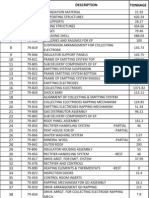Please provide values below to convert psi [psi] to kilopascal [kPa], or vice versa.
The formula is as follows: To convert pounds per square inch to kilopascals (PSI to KPA), multiply the PSI value by 6.68361. To convert kilopascals to pounds per square inch (KPA to PSI), multiply the kpa value by.3020923. KPa megapascal MPa microbar µbar micropascal µPa millibar mbar millimeter mercury (0°C) mmHg millipascal mPa nanopascal nPa newton/square centimeter N/cm² newton/square meter N/m² newton/square millimeter N/mm² pascal Pa petapascal.
Kpa To Psi Conversion Formula
Pound-force per square inch
Definition: A pound-force per square inch (symbol: psi) is an imperial and US customary unit of pressure based on avoirdupois units. It is defined as the pressure that results when a force of one pound-force is applied to a one-square-inch area. One psi is approximately 6,895 pascals (N/m2).
History/origin: Pound-force per square inch is a unit that originated in the imperial and US customary systems of units. It is based on the avoirdupois system, a system that uses weights in terms of the avoirdupois pound, which was standardized in 1959. The system is believed to have come into use in England around 1300 and was used in the international wool trade. As such, the prototype pound at the time was known as the avoirdupois wool pound.
Current use: The psi is fairly widely used to measure numerous pressures, such as tire pressure, scuba tank pressure, natural gas pipeline pressure, among others. Although the pascal is more widely used in scientific contexts, psi is more often used in everyday contexts, particularly in countries like the United States as well as others under the US customary or imperial systems of units.
Kilopascal
Definition: A kilopascal (symbol: kPa) is a multiple of the pascal (Pa), an SI (International System of Units) derived unit of pressure used to measure internal pressure, Young's modulus, stress, and ultimate tensile strength. A kilopascal is defined as 1,000 Pa, where 1 Pa is defined as the pressure exerted by a 1 newton force applied perpendicularly to an area of one square meter, expressed as 1 N/m2 or 1 kg/m·s2.

History/origin: The unit, pascal, is named after Blaise Pascal, a French mathematician and physicist. The kilopascal is simply a multiple of the pascal, as is common within SI.
Download Kpa To Psi Conversion Equation Backstage Standard Form
In 1971, at the 14th General Conference on Weights and Measures, the pascal was adopted as an SI derived unit of pressure.
Kpa Psi Converter
Current use: The kilopascal is widely used worldwide in countries that have adopted SI. Exceptions include certain countries that use either the imperial or United States customary systems of measurement, such as the United States, in which the unit of pound per square inch is more commonly used. The kilopascal is more prevalent in scientific contexts such as material science, engineering, and geophysics. This is true of most countries, including the United States.
Kpa To Psi Conversion Calculator
Psi to Kilopascal Conversion Table
| Psi [psi] | Kilopascal [kPa] |
|---|---|
| 0.01 psi | 0.0689475729 kPa |
| 0.1 psi | 0.6894757293 kPa |
| 1 psi | 6.8947572932 kPa |
| 2 psi | 13.7895145864 kPa |
| 3 psi | 20.6842718795 kPa |
| 5 psi | 34.4737864659 kPa |
| 10 psi | 68.9475729318 kPa |
| 20 psi | 137.8951458636 kPa |
| 50 psi | 344.7378646589 kPa |
| 100 psi | 689.4757293178 kPa |
| 1000 psi | 6894.7572931783 kPa |
How to Convert Psi to Kilopascal
1 psi = 6.8947572932 kPa
1 kPa = 0.1450377377 psi
Example: convert 15 psi to kPa:
15 psi = 15 × 6.8947572932 kPa = 103.4213593977 kPa
Popular Pressure Unit Conversions
Convert Psi to Other Pressure Units

